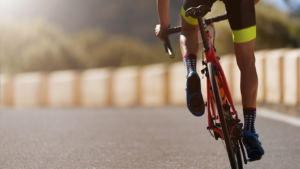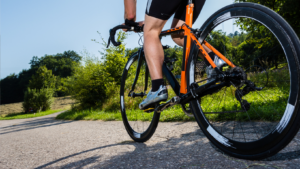Endurance cycling pushes the body to its limits, demanding peak performance and stamina. To achieve this, cyclists need more than just rigorous training; they need a well-rounded nutrition plan. Proper nutrition fuels long rides, aids in recovery, and enhances overall performance.
Understanding what to eat before, during, and after a ride can make all the difference. From carb-loading strategies to hydration techniques, these tips will help cyclists maintain energy levels and avoid the dreaded “bonk.” Whether you’re a seasoned pro or a weekend warrior, mastering nutrition is key to conquering those miles.
Endurance Cycling Nutrition Tips
Nutrition plays a critical role in endurance cycling. Cyclists need a balanced diet to sustain energy levels during long rides. Without proper nutrition, even the most rigorous training fails to yield peak performance. Consuming the right mix of carbohydrates, proteins, and fats helps maintain stamina and muscle repair.

Carbohydrates serve as the primary fuel source. A diet rich in complex carbs, such as whole grains and vegetables, ensures steady energy release. Proteins are essential for muscle recovery. Cyclists should include lean meats, dairy, or plant-based proteins like beans and nuts in their meals. Fats provide long-lasting energy; sources like avocados and nuts are ideal.
Hydration is equally important. Dehydration impairs performance and increases fatigue. Cyclists must drink fluids regularly, both water and electrolyte solutions, to stay hydrated. Proper nutrition before, during, and after rides allows cyclists to tackle long distances effectively and reduce the risk of exhaustion.
Pre-Ride Nutrition Tips
Fueling properly before a ride ensures sustained energy and improved performance. Consuming a carbohydrate-rich meal 3-4 hours before the ride helps maintain glycogen stores. Examples include oatmeal with fruit or a whole-grain pasta dish. Adding proteins like eggs or yogurt aids muscle readiness.

Hydrating adequately is equally important. Drink at least 500ml of water within an hour of starting. Include electrolytes if the ride will be over 90 minutes. Avoid high-fiber foods or excessive fats as they can cause discomfort or sluggishness.
A small snack 30 minutes before the ride, like a banana or an energy bar, provides a quick energy boost. This careful approach to pre-ride nutrition supports stamina and focus.
During-Ride Nutrition Tips
Consuming the right nutrients during a ride is critical for maintaining energy and endurance. Cyclists should aim to consume 30-60 grams of carbohydrates per hour, depending on body weight and intensity, from sources such as energy gels, bars, and fruit. Hydration is equally vital; taking small sips of water every 15-20 minutes helps maintain fluid balance. Including electrolytes like sodium and potassium in your fluids can prevent cramping and dehydration.
It’s beneficial to listen to your body and eat before feeling hungry. Small, frequent snacks can prevent energy dips. For rides exceeding two hours, mixing simple carbs for immediate energy with complex carbs for sustained fuel is recommended. Examples include a mix of energy gels (simple carbs) and whole grains (complex carbs).
Post-Ride Recovery Nutrition
Mastering post-ride recovery nutrition is crucial for replenishing energy stores and aiding muscle repair. Cyclists should consume a balanced meal within 30-60 minutes after finishing a ride. This meal should include a mix of carbohydrates and proteins in a 3:1 ratio, such as a smoothie with banana, yogurt, and a scoop of protein powder.

Hydration remains essential post-ride. Drinking water or a recovery drink with electrolytes can help restore fluid balance and prevent dehydration. Including anti-inflammatory foods like berries and green leafy vegetables can also aid in reducing muscle soreness.
By focusing on proper nutrition before, during, and after rides, cyclists can optimize their performance and recovery. Adopting these strategies ensures sustained energy levels, reduced fatigue, and overall better endurance, making every ride more enjoyable and effective.

